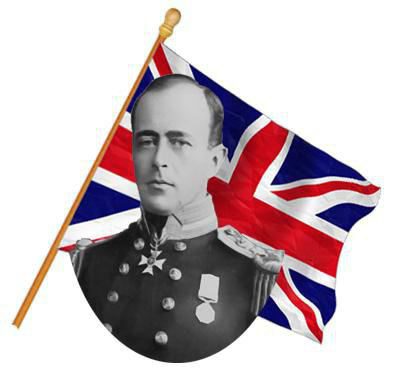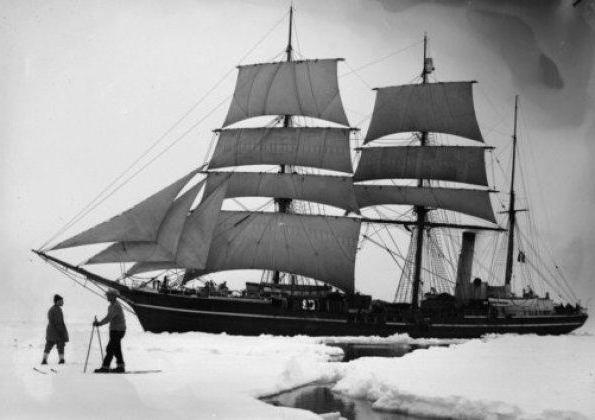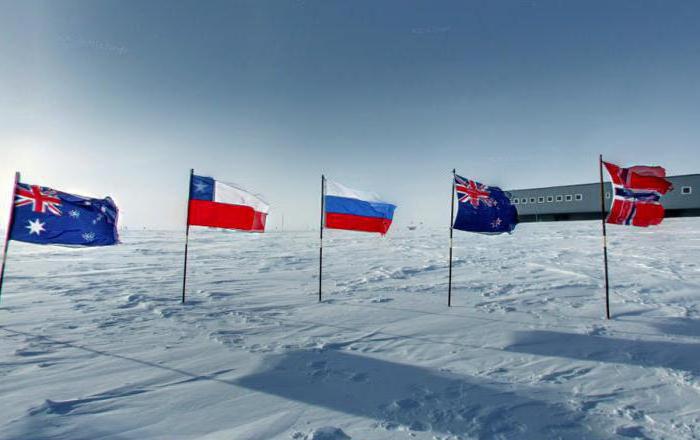The discovery of the South Pole - the centuries-old dream of polar explorers - at its final stage in the summer of 1912 assumed the character of a tense competition between the expeditions of two states - Norway and Great Britain. For the first, it ended in triumph, for others - a tragedy. But, despite this, the great travelers Rual Amundsen and Robert Scott, who led them, forever entered the history of the development of the sixth continent.
The first researchers of the southern polar latitudes
The conquest of the South Pole began back in those years when people only vaguely suspected that somewhere on the edge of the Southern Hemisphere there should be land. The first of the seafarers who managed to get close to her was Amerigo Vespucci, who sailed in the South Atlantic and reached the fiftieth latitude in 1501.
It was an era when great geographical discoveries were made. Having briefly described his stay in these previously inaccessible latitudes (Vespucci was not only a navigator, but also a scientist), he continued on his way to the shores of the new, recently discovered continent - America - which bears his name today.
A systematic study of the southern latitudes in the hope of finding an unknown land almost three centuries later was undertaken by the famous Englishman James Cook. He managed to get even closer to her, reaching the seventy-second parallel, but Antarctic icebergs and floating ice prevented his further advance to the south.
Discovery of the Sixth Continent
Antarctica, the South Pole, and most importantly - the right to be called the discoverer and pioneer of ice-bound lands and the glory associated with this circumstance haunted many. Throughout the nineteenth century there were continuous attempts to conquer the sixth continent. Our sailors Mikhail Lazarev and Thaddeus Bellingshausen, directed by the Russian Geographical Society, the Englishman Clark Ross, who reached the seventy-eighth parallel, as well as a number of German, French and Swedish researchers, took part in them. These enterprises were crowned with success only at the end of the century, when the Australian Johann Bull was honored to be the first to set foot on the shore of hitherto unknown Antarctica.

From that moment, not only scientists, but also whalers, rushed into the Antarctic waters, for whom the cold seas represented a wide fishing area. Year after year, the coast was developed, the first research stations appeared, but the South Pole (its mathematical point) was still inaccessible. In this context, the question arose with extraordinary acuteness: who will be able to get ahead of the competitors and whose national flag will first fly at the southern end of the planet?
South Pole Race
At the beginning of the XX century, attempts were repeatedly made to conquer the impregnable corner of the Earth, and each time the polar explorers managed to get closer to it more and more. The culmination came in October 1911, when the ships of two expeditions at once - the British, under the leadership of Robert Falcon Scott, and the Norwegian, which was headed by Roald Amundsen (the South Pole for him was a long and cherished dream), almost simultaneously headed for the shores of Antarctica. They were separated by only a few hundred miles.
It is curious that at the beginning the Norwegian expedition was not going to storm the South Pole. Amundsen and his crew were heading to the Arctic. It was the northern tip of the Earth that was listed in the plans of an ambitious navigator. However, on the way he received a message that the North Pole had already submitted to the Americans - Cook and Peary. Not wanting to drop his prestige, Amundsen abruptly changed course and turned south. Thus, he challenged the British, and they could not help but stand up for the honor of their nation.
His rival Robert Scott, before devoting himself to research, served as an officer in the Navy of Her Majesty for a long time and gained sufficient experience in commanding battleships and cruisers. After retiring, he spent two years on the coast of Antarctica, taking part in the work of the scientific station. He even made an attempt to break through to the pole, but having advanced a considerable distance in three months, Scott was forced to turn back.
On the eve of a decisive assault
The tactics for achieving the goal in a kind of Amundsen-Scott race were different for the teams. The main vehicle of the British were Manchu horses. Short and hardy, they were the best suited to the conditions of the polar latitudes. But, besides them, the travelers had at their disposal traditional dog teams in such cases and even the perfect novelty of those years - motor sledges. Norwegians, however, relied heavily on proven northern huskies, which were supposed to pull four sledges, heavy equipment, all along the way.
Both were facing a path eight hundred miles long one way, and the same back (if they survived, of course). Ahead of them were waiting for glaciers cut by bottomless cracks, terrible frosts, accompanied by snowstorms and a snowstorm and completely excluding visibility, as well as frostbite, injury, hunger and all kinds of deprivations inevitable in such cases. The reward for one of the teams was to be the glory of the discoverers and the right to hoist the flag of their state on the pole. Neither the Norwegians nor the British doubted that the game was worth the candle.

If Robert Scott was more skilled and sophisticated in navigation, then Amundsen clearly excelled him as an experienced polar explorer. Decisive transitions to the pole were preceded by a wintering on the Antarctic continent, and the Norwegian managed to choose a much more suitable place for her than his British counterpart. Firstly, their camp was located almost a hundred miles closer to the final point of travel than the British, and secondly, the route from it to the Amundsen pole was laid in such a way that it managed to bypass areas where at this time of the year the most severe frosts raged and ongoing snowstorms and blizzards.
Triumph and defeat
A detachment of Norwegians managed to go all the way and return to the base camp, keeping within the short Antarctic summer. One can only admire the professionalism and brilliance with which Amundsen led his group, having withstood with incredible accuracy his own schedule. Among the people who trusted him, there were not only those who died, but even those who received any serious injuries.
A completely different fate awaited Scott's expedition. Before the most difficult part of the journey, when there were one hundred and fifty miles to the goal, the last members of the auxiliary group turned back, and the five British researchers themselves harnessed to the heavy sleds. By this time, all the horses had fallen, the motor sled had failed, and the dogs were simply eaten by the polar explorers themselves — they had to take extreme measures to survive.
Finally, on January 17, 1912, as a result of incredible efforts, they reached the mathematical point of the South Pole, but there terrible disappointment awaited them. Everything around bore the traces of rivals who had been here before them. Imprints of sled runners and dog paws were visible in the snow, but the tent left between the ice, above which the Norwegian flag fluttered, most convincingly testified to their defeat. Alas, the discovery of the South Pole by them was missed.
Scott left notes in the diary about the shock that his group members experienced. A terrible disappointment plunged the British into a real shock. The next night they all spent without sleep. They were burdened with thoughts about how they looked into the eyes of those people who, over hundreds of miles of travel on the icy continent, freezing and falling into cracks, helped them reach the last leg of the journey and undertake a decisive, but unsuccessful assault.
Catastrophe
However, in spite of everything, it was necessary to gather strength and return. Between life and death there were eight hundred miles of the return journey. Moving from one intermediate camp with fuel and food to another, polar explorers sorely lost strength. Every day their situation became more hopeless. A few days later, the camp was visited for the first time by death - the youngest of them died and seemed physically strong Edgar Evans. His body was buried in snow and littered with heavy ice.
The next victim was Lawrence Ots, a dragoon captain who went to the pole, driven by a thirst for adventure. The circumstances of his death are very remarkable - having frostbitten his arms and legs and realizing that he is becoming a burden to his comrades, at night he secretly left the place of overnight from everyone and went into impenetrable darkness, voluntarily condemning himself to death. His body was never found.
Only eleven miles remained to the nearest intermediate camp, when a blizzard suddenly rose, completely precluding the possibility of further advancement. Three Englishmen found themselves in ice captivity, cut off from the whole world, deprived of food and any opportunity to warm themselves.
The tent they had broken up, of course, could not serve as any reliable shelter. The outside temperature dropped to -40 ° C, respectively, inside, in the absence of a heater, it was not much higher. This insidious March blizzard never let them out of their arms ...
Death row
Six months later, when the tragic outcome of the expedition became apparent, a rescue team was sent to search for polar explorers. Among the impenetrable ice, she managed to find a tent covered with snow with the bodies of three British explorers - Henry Bowers, Edward Wilson and their commander Robert Scott.
Scott's diaries were found among the things of the dead, and, which struck the rescuers, bags of geological samples collected on the slopes of the cliffs protruding from the glacier. Incredibly, the three British stubbornly continued to drag these stones even when there was practically no hope of salvation.
In his notes, Robert Scott, having described and analyzed in detail the reasons that led to the tragic denouement, praised the moral and volitional qualities of his comrades who accompanied him. In conclusion, referring to those in whose hands the diary would fall, he asked that everything be done so that his relatives would not be left to their own devices. Having devoted several farewell lines to his wife, Scott bequeathed to her to ensure that their son received the appropriate education and was able to continue his research activities.
By the way, in the future, his son Peter Scott became a famous ecologist who devoted his life to protecting the planet’s natural resources. Having been born shortly before the day when his father went on the last expedition in his life, he lived to an advanced age and died in 1989.
The public outcry caused by the tragedy
Continuing the story, it should be noted that the competition between two expeditions, the result of which for one was the discovery of the South Pole, and for the other - death, had very unexpected consequences. When the celebrations on the occasion of this, of course, important geographical discovery were completed, congratulatory speeches were silenced and a standing ovation was heard, the question arose of the moral side of what happened. There was no doubt that, indirectly, the cause of the British death was the deep depression caused by the victory of Amundsen.
Not only in the British, but also in the Norwegian press there were direct accusations against the recently honored winner. A reasonable question was raised: did Roald Amundsen, experienced and very experienced in the study of extreme latitudes, have the moral right to draw Scott and his comrades into the competitive process without the necessary skills? Wasn’t it more correct to invite him to unite and jointly implement his plan?
Riddle of Amundsen
How Amundsen reacted to this and whether he blamed himself for involuntarily causing the death of his British colleague - a question that remained forever unanswered. True, many of those who knew the Norwegian researcher closely claimed to have seen clear signs of his mental turmoil. In particular, his attempts at public excuses, completely uncharacteristic of his proud and partly arrogant nature, could serve as evidence of this.
Some biographers tend to see evidence of unforgiven self-guilt in the circumstances of the death of Amundsen himself. It is known that in the summer of 1928 he went on an Arctic flight, promising him certain death. Suspicion that he had foreseen his own death in advance was caused by the preparations he had undertaken. Not only did Amundsen put everything in order and paid off his creditors, he also sold all his property, as if he was not going to go back.
Sixth continent today
One way or another, and the discovery of the South Pole was made by him, and no one will take away this honor from him. Today, large-scale scientific research is being conducted at the southern tip of the Earth. At the very place where once the Norwegians were expected to triumph, and the British - the greatest disappointment, today is the Amundsen-Scott international polar station. In her name these two undaunted conquerors of extreme latitudes invisibly united. Thanks to them, the South Pole on the globe is perceived today as something familiar and quite reachable.
In December 1959, an international treaty on Antarctica was signed, originally signed by twelve states. According to this document, any country has the right to conduct scientific research throughout the continent south of the sixtieth latitude.
Thanks to this, today numerous research stations in Antarctica are developing the most advanced scientific programs. Nowadays there are more than fifty of them. Scientists have at their disposal not only ground-based environmental controls, but also aviation and even satellites. It has representatives on the sixth continent and the Russian Geographical Society. Among the existing stations there are veterans such as Bellingshausen and Druzhnaya 4, as well as relatively new ones - Russkaya and Progress. Everything suggests that in our days the great geographical discoveries do not stop.

The brief history of how brave Norwegian and British travelers, despising danger, sought their cherished goal, can only convey in general terms all the tension and drama of those events. It is incorrect to consider their duel only as a struggle of personal ambitions. Undoubtedly, the thirst for discovery and the desire built on true patriotism to assert the prestige of their country played a primary role in it.